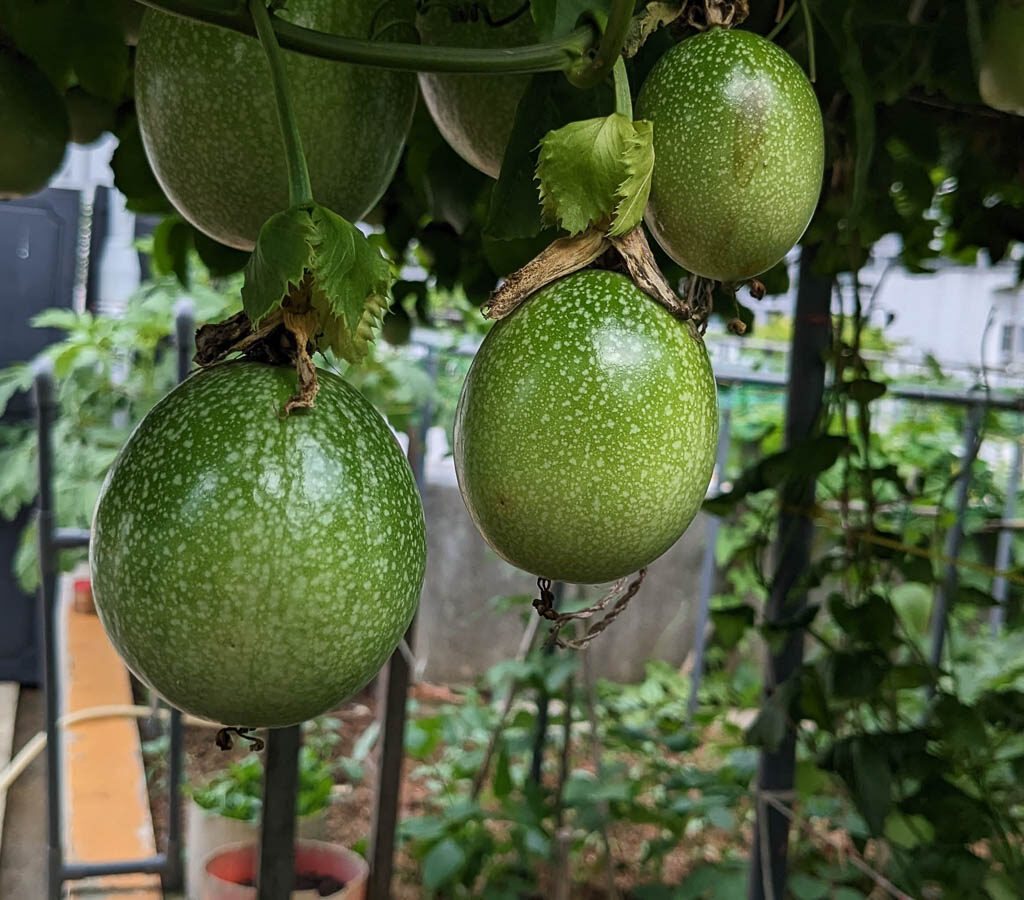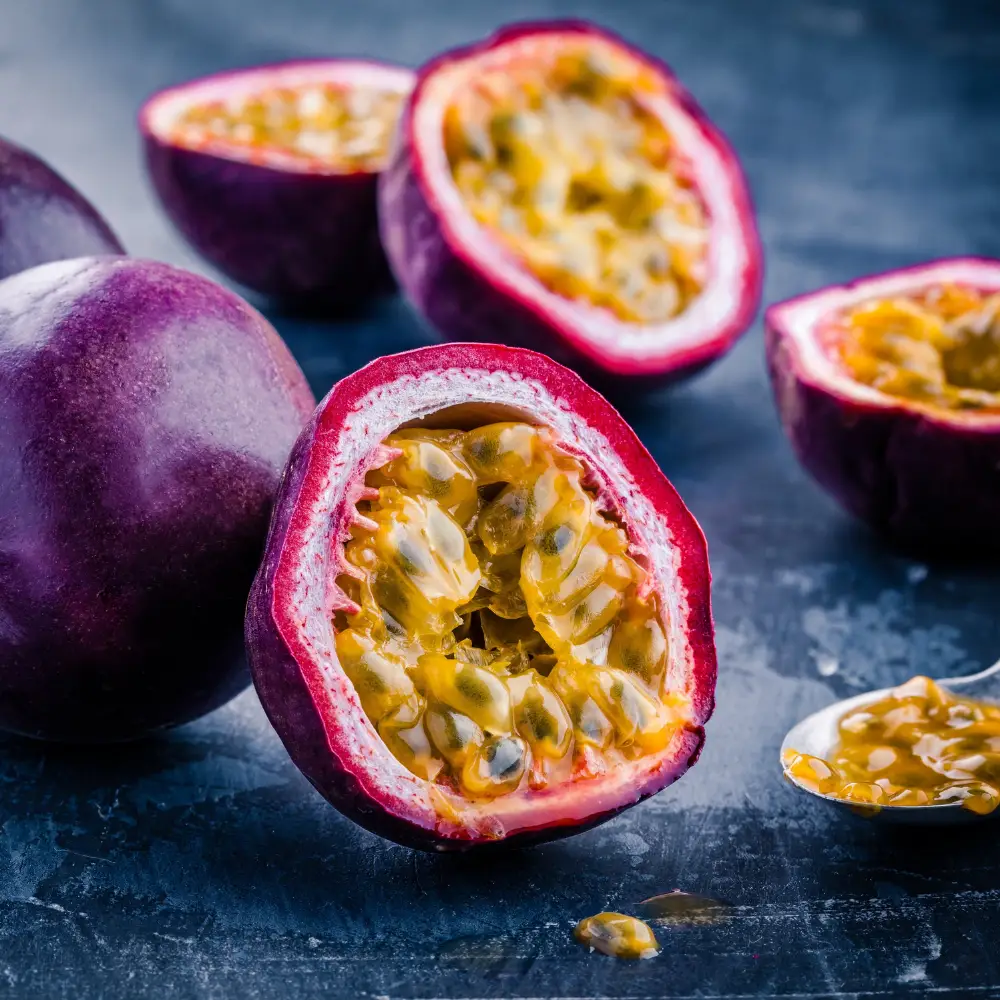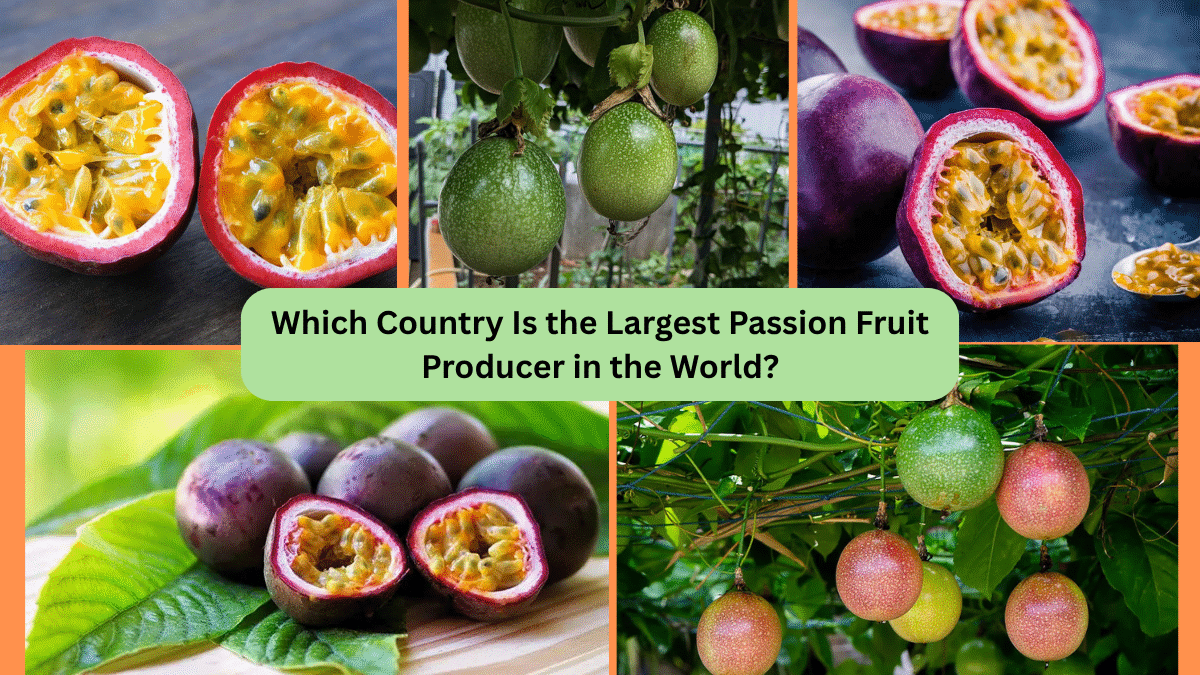Passion fruit, with its exotic aroma, tangy-sweet taste, and vibrant appearance, has steadily grown in popularity worldwide. Whether enjoyed fresh, juiced, or as a flavoring in desserts and beverages, this tropical fruit captivates food lovers and health enthusiasts alike. But have you ever wondered which nation leads the world in producing this delicious fruit?
In this article, we’ll uncover which country is the largest passion fruit producer in the world, what makes this country’s production so significant, and how passion fruit is transforming agriculture and markets globally.
Passion Fruit: A Tropical Favorite

Passion fruit (Passiflora edulis) is a fast-growing, climbing vine native to South America. It thrives in tropical and subtropical climates, producing round or oval fruits with tough rinds and aromatic, jelly-like pulp filled with edible seeds. The two most common types are:
- Purple Passion Fruit (Passiflora edulis): Typically smaller, with a sweet and tangy flavor.
- Yellow Passion Fruit (Passiflora edulis flavicarpa): Larger, more acidic, and often used in juices and commercial processing.
Beyond its refreshing taste, passion fruit is a nutritional powerhouse, loaded with vitamin C, fiber, antioxidants, and plant compounds beneficial for immunity, digestion, and heart health.
Global Passion Fruit Production: An Overview
Passion fruit farming has expanded significantly over the last few decades, especially in tropical countries across South America, Africa, and Asia. The Food and Agriculture Organization (FAO) estimates that global passion fruit production exceeds 1.5 million metric tons annually.
Although several countries produce passion fruit commercially, one nation has consistently outpaced the rest in both quantity and market dominance.
Brazil: The Largest Passion Fruit Producer in the World

When it comes to passion fruit production, Brazil reigns supreme. This South American agricultural powerhouse accounts for nearly 60% of global production, growing an estimated 920,000 metric tons of passion fruit annually.
Why Is Brazil the World Leader in Passion Fruit Production?
Several factors contribute to Brazil’s unmatched dominance in the passion fruit industry:
- Ideal Climate Conditions:
Brazil’s vast tropical and subtropical regions provide the perfect temperature, rainfall, and soil conditions needed for passion fruit cultivation. - Expansive Agricultural Land:
The country’s large and diverse agricultural landscape allows farmers to cultivate passion fruit on both small family farms and large-scale plantations. - Strong Domestic Demand:
Brazilians consume passion fruit extensively in juices, desserts, ice creams, cocktails, and traditional medicines, creating a massive internal market. - Agricultural Research and Innovation:
Brazil invests heavily in agricultural research, developing disease-resistant, high-yield passion fruit varieties and modern farming practices. - Government Support:
Federal and state-level agricultural initiatives offer support, subsidies, and training programs to boost horticulture and export potential.
Major Passion Fruit Producing Regions in Brazil
Passion fruit cultivation in Brazil thrives particularly in:
- Bahia
- Ceará
- Espírito Santo
- Pará
- São Paulo
- Minas Gerais
Among these, Bahia is the largest producing state, contributing more than 30% of Brazil’s total passion fruit output due to its fertile soils and favorable year-round growing conditions.
Other Top Passion Fruit Producing Countries

While Brazil leads by a significant margin, several other countries are prominent players in the passion fruit industry:
| Country | Production (2023) |
|---|---|
| Brazil | 920,000 metric tons |
| Peru | 200,000 metric tons |
| Ecuador | 160,000 metric tons |
| Colombia | 140,000 metric tons |
| Kenya | 95,000 metric tons |
1. Peru
Peru is the second-largest producer, with significant exports of fresh passion fruits and pulp to North America and Europe. Its coastal valleys and Amazon basin are ideal for year-round cultivation.
2. Ecuador
Ecuador has built a robust export market, especially for yellow passion fruit (known locally as maracuyá), sending large quantities to the U.S., Canada, and the Netherlands.
3. Colombia
Colombia’s diverse climates allow for varied passion fruit production. The fruit is essential in local cuisines and is exported both fresh and as frozen pulp.
4. Kenya
As Africa’s leading passion fruit producer, Kenya has invested in horticulture to meet both domestic and international demand. Passion fruit farming is a vital income source for thousands of smallholder farmers.
The Global Passion Fruit Market
Passion fruit is not just loved for its taste — it’s a valuable commodity in international markets. The demand for fresh passion fruit, juice concentrates, flavor extracts, and cosmetic ingredients has surged, especially in:
- Europe (particularly France, the Netherlands, and Germany)
- United States
- United Arab Emirates
- Japan
- Australia
Brazil’s dominance in production is largely complemented by Peru and Ecuador, which are the leading exporters, owing to their strong focus on meeting export standards, attractive pricing, and logistics advantages.
Health Benefits of Passion Fruit

The passion fruit’s increasing global popularity also comes from its impressive nutritional profile and health benefits:
- Rich in Vitamin C:
Boosts immunity and skin health. - High in Dietary Fiber:
Promotes healthy digestion and regulates blood sugar levels. - Loaded with Antioxidants:
Contains polyphenols and carotenoids that fight oxidative stress. - Supports Heart Health:
Potassium and plant compounds help maintain healthy blood pressure. - Has Anti-Inflammatory Properties:
Traditionally used to relieve asthma and digestive issues.
Economic and Social Importance
In Brazil and other producing countries, passion fruit cultivation is not just an agricultural activity — it’s a socio-economic asset.
In Brazil:
- Employment Generation:
Supports thousands of smallholder farmers, rural laborers, and women entrepreneurs. - Value-Added Products:
Passion fruit is processed into juices, syrups, jams, yogurts, flavorings, and herbal teas. - Traditional Medicine:
The leaves and pulp are used in natural remedies for anxiety, insomnia, and hypertension. - Export Revenue:
Passion fruit contributes substantially to Brazil’s horticultural exports.
Challenges in Passion Fruit Farming

Despite its advantages, passion fruit cultivation faces certain challenges:
- Pests and Diseases:
Diseases like Fusarium wilt and bacterial blight, as well as fruit flies, can severely impact yields. - Short Shelf Life:
Passion fruits are highly perishable, requiring efficient harvesting, storage, and transportation. - Climate Vulnerability:
Extreme weather events like droughts and floods threaten crop productivity. - Market Price Instability:
Seasonal fluctuations can affect profitability for smallholder farmers.
The Future of Passion Fruit Production
The global demand for passion fruit is expected to grow due to its health benefits, culinary versatility, and rising interest in tropical fruits. Brazil is well-positioned to maintain its lead with continued investments in agricultural research, disease management, and export infrastructure.
Moreover, African nations like Kenya and Uganda are emerging as strong contenders in the export market, with growing investments in sustainable farming and fair-trade practices.
Conclusion
So, which country is the largest passion fruit producer in the world? — Brazil holds the title by a significant margin, producing over 920,000 metric tons annually. Thanks to its favorable climate, strong domestic market, and investment in agricultural innovation, Brazil dominates the global passion fruit industry.
As passion fruit continues to capture international markets and health-conscious consumers, Brazil’s leadership, alongside rising contenders from South America and Africa, will shape the future of this vibrant, flavorful, and economically vital tropical fruit.





Leave A Comment